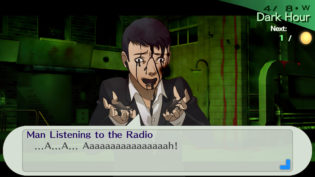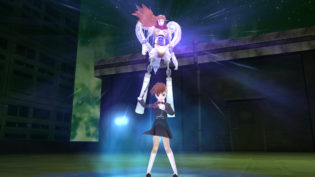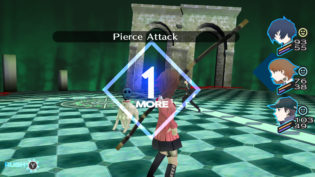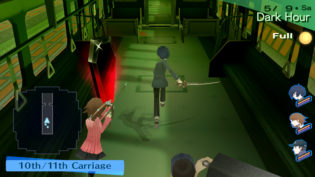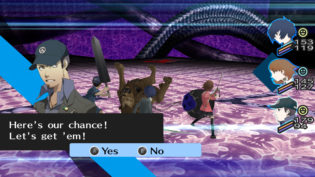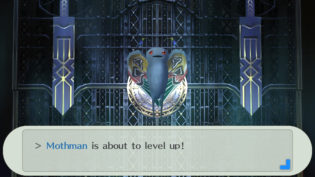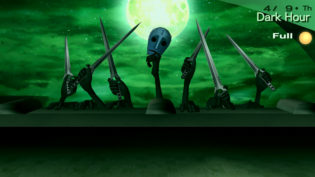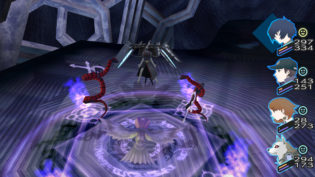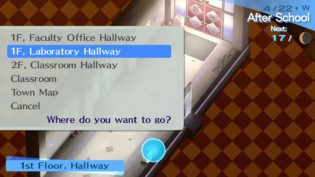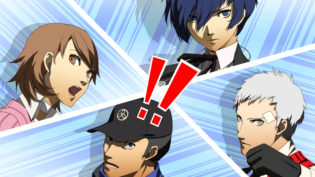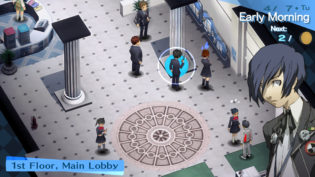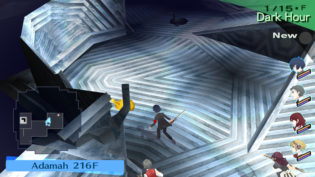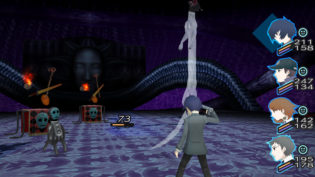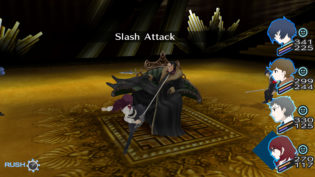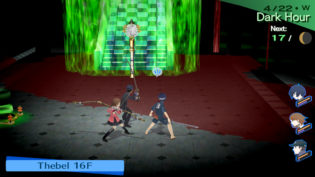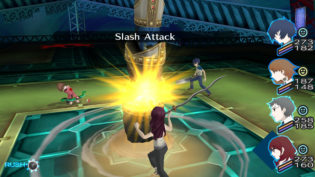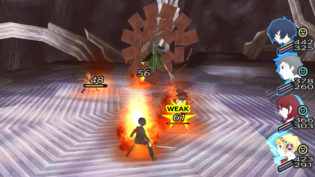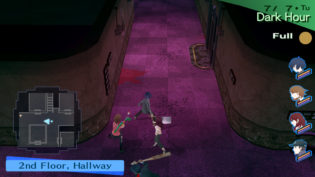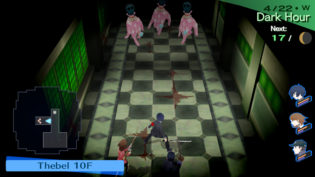O tempora is a series of retrospective posts where I play games from ages before to see if they stood the test of time.
Persona 3 FES was my first experience with the Persona sub-series of Megami Tensei franchise. I’ve started playing it about 14 years ago or so, after Persona 4 was already out and Persona 3 Portable was about to get released on PSP. And although I was enjoying its inventive mix of a life sim and tactical RPG, enhanced by a fantastic soundtrack and really stylish visuals, I got stuck on one part of the game and due to how slow (even by the standards of that time) loading was on PS2, I gave up. Later on the same thing happened with Persona 4 and it stayed that way until 2020 when an enhanced version of the latter, called Persona 4 Golden, did get remastered for PC. Despite being far longer than I’d like (especially since I tend to play jRPGs for stories rather then mechanics), playing the game was very enjoyable and I was hoping the other parts of the franchise would get ported as well. Fast forward 3 more years and we have both Persona 5 Royal (which I have just started playing) and Persona 3 Portable available on PC, so I could finally finish that playthrough I’ve started. Kinda… Because Portable version is quite a bit different with mixed results.
Few things to get out of the way. First – Megami Tensei franchise is huge, but it doesn’t really matter as even inside it’s more or less consistent timeline of Persona sub-series, all game stories are entirely self-contained, so no prior knowledge is needed. Second – while the franchise existed since the late 80s and was popular in Japan, none of the entries were localized and released outside of the country until the very first entry in the Persona series. So, in a way, it was Megami Ibunroku Persona (localized with cuts and changes as Revelations: Persona) that got international attention, after which the series started focusing more on getting a bigger audience. The high-school setting of Persona series was also selected as an attempt to appeal to a broader audience, but it wasn’t until Persona 3 that this aspect became a huge part of a role-play experience with the life-sim aspects. This mix remains very unique and apart from several other attempts to mimic it, like the rather bland Tokyo Xanadu, is now a staple of the Persona series.
Persona 3 established several aspects that were very different from the first 3 games in the franchise (Persona 2 is two games, both of which are canonical) but are now the staple of the series. As mentioned – it introduced a whole life simulator aspect to the already existing story-driven dungeon crawling turned based RPG series and did it in a way where aspects of one complement the other. You get to live through a year of school life, each day divided into two sections, where you can improve your social attributes, form friendships and romances, do optional quests and participate in school life. While also finding the time to explore a gigantic dungeon full of shadows with the team of friends. And in the original version of the game (and FES expanded re-release) you had to balance the fact that as you explore the dungeon you and your friends become tired, which affects the normal life and normal life can also affect this status in a positive or negative way. In the Portable release this aspect has been slightly simplified, although it’s still a factor.
The experience of somewhat tedious but potentially fun normal life and difficult tactical battles, where you always aim to exploit enemy weaknesses, was enhanced by incredibly stylish visuals, fantastic animated sequences and insanely catchy soundtrack. The story of the game, that deals with lots of dark topics, was handled well and in general remains strong today, also enhanced by the abovementioned sound and visuals. But this is where the first difference of Portable comes into play.
Since P3P was developed for PSP and had to take up a lot less space than what a PS2 game could, a huge amount of visual content was cut. All animated sequences from the original game are cut, most of the non-combat locations are swapped for pictures and most of the game is now played out as a visual novel rather than a 3D-driven game. And while it is actually quite useful to be able to instantly move to a location or interact with something via a cursor, instead of running to the spot, this change seriously hurts the experience. Lots of nuance in cutscenes is now lost, since you can’t see 3D characters on screen emote with just movement, most of the scenes that were amazing in animated form fall flat when presented in a series of flat images. The game wasn’t designed for this style in the first place, so in transitioning to it, the game loses a lot of its charm.
On the other hand, Portable also improves most of the gameplay, which was further improved in this new release. Many quality of life features are introduced, some of the systems that were frustrating are simplified or made better, controlling allies in fights is far more convenient with most of the improvements from Persona 4 ported back into this game. And the gigantic addition of the version is the ability to play as a female protagonist which significantly changes supporting elements of the main story and also, apparently (I haven’t played through it myself to test) makes all opposite sex social links far less annoying, as you don’t have to pretend like you’re collecting a harem and have friends instead.
Speaking of – while Persona 4 Golden had its share of questionable tropes and dumb moments, Persona 3 Portable feels less obnoxious in this regard in general. If you ignore the social links which are, for whatever reason, an excuse to give you (well, the protagonist, but you’re supposed to be him) the ability to be the most desired male on the planet, because everyone wants to be your girlfriend. It’s genuinely distracting, though not because the game is especially horny, but rather because for a lot of characters there’s no real story, they just exist to be a particular archetype for dating. Even though the overall tale of Persona 3 is good and the final act of the game is really well done, it’s not a very interesting story for huge sections of time. Vast majority of the game is quite boring, actually, and while there are mysteries to unfold, you’re usually following a clear simple goal. And since most of social links are also bland non-characters, it’s easy to start getting bored…
Which is exactly how I felt like for a big part of my playthrough. At a certain point, I’ve realized that the “You’ve become tired” notification reflected my state of mind, not one of the protagonist. And I fear even adding the style and content of the original and FES releases of the game wouldn’t have saved that. I’ve never played “The Answer” – the epilogue chapter of the FES re-release that didn’t get included in P3P. And even ignoring the fact that most fans of the game I know say that it wasn’t good anyway – I don’t think I would’ve had it in me to go through it. I was rushing to the end in the final dozen of hours, because I just wanted the experience to end and I have to say that even with Persona 4, that was also way too long for my liking, I wasn’t as looking forwards to the game ending as I did here.
Because thing is – a lot of the gameplay feels as if it was specifically designed to be longer, slower, more convoluted. As if some quests and length of the dungeons and the systems weren’t rough and tedious on accident, but on purpose. As if the developers understood that some parts of the game might be unfun and made them even worse by design. And when some required fights took forever to go through, it was more often due to the overall slowness of the process, not the challenge of it. Or animations that took 50000 years to complete every turn for one of the boss battles that had absolutely nothing else going for it other than this gimmick. I doubt that even if some magical version of the game that includes the content of Persona 3 FES and all of the improvements from Portable could exist that I’d wish to replay the title again.
I wish I could’ve enjoyed Persona 3 Portable more as I still respect this title and think that it’s underlying story and style can still shine through. But I think only a full remake that would address countless issues properly could make the game as good as it’s often thought to be. Could the recently announced Persona 3 Reload be that remake? For now I doubt it, since it’s currently promoted as “same as the original, but better”, which is probably not enough. And playing Persona 4 Golden is a far more enjoyable experience than this. Those who love the mechanics and love to spend dozens or hundreds of hours with games will probably have a far better time still enjoying this title and there are many things to enjoy. But for me – I’m just glad I’ve finally completed this title and can move on.



